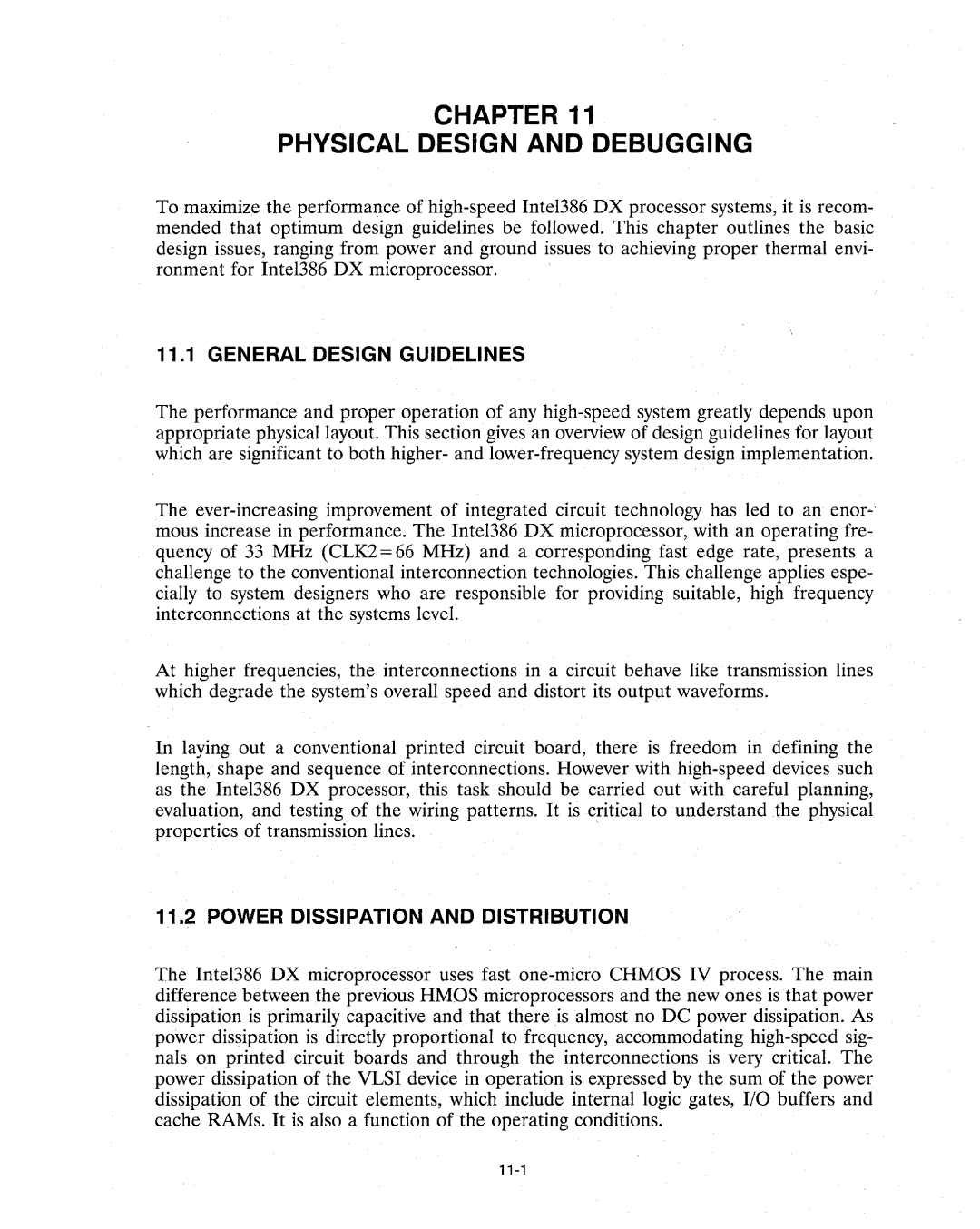
CHAPTER 11
PHYSICAL DESIGN AND DEBUGGING
To maximize the performance of high-speed Intel386 DX processor systems, it is recom- mended that optimum design guidelines be followed. This chapter outlines the basic design issues, ranging from power and ground issues to achieving proper thermal envi- ronment for Intel386 DX microprocessor.
11.1 GENERAL DESIGN GUIDELINES
The performance and proper. operation of any high-speed system greatly depends upon appropriate physical layout. This section gives an overview of design guidelines for layout which are significant to both higher- and lower-frequency system design implementation.
The ever-increasing improvement of integrated circuit technology has led to an enor-' mous increase in performance. The Inte1386 DX microprocessor, with an operating fre- quency of 33 MHz (CLK2=66 MHz) and a corre~ponding fast edge rate, presents a challenge to the conventional interconnection technologies. This challenge applies espe- cially to system designers who are responsible for providing suitable, high frequency interconnections at the systems level.
At higher frequencies, the interconnections in a circuit behave like· transmission lines which degrade the system's overall speed and distort its output waveforms.
In laying out a conventional printed circuit board, there is freedom in defining the length, shape and sequence of interconnections. However with high-speed devices such
| | |
as the Inte1386 | DX processor, this task should be carried out with careful planning, |
evaluation, and | testing of the wiring patterns. It is critical to understand the physical |
properties of transmission lines. | . |
1.1.2POWER DISSIPATION AND DISTRIBUTION
The Inte1386 DX microprocessor uses fast one-micro CHMOS IV process. The main difference between the previous HMOS microprocessors and the new one~ is that power dissipation is primarily capacitive and that there is almost no DC power dissipation. As power dissipation is directly proportional to frequency, accommodating high-speed sig- nals on printed circuit boards and through the interconnections is very critical. The power dissipation of the VLSI device in operation is expressed by the sum of the power dissipation of the circuit elements, which include internal logic gates, I/O buffers and cache RAMs. It is also a function of the operating conditions.

